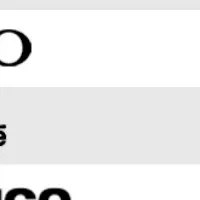
High Temperature Filters Market Set to Surge to $4.5 Billion by 2032 Amidst Industrial Growth Trends
High Temperature Filters Market Surge
The global high temperature filters market is anticipating remarkable growth, with predictions indicating it will escalate to $4.5 billion by 2032. This significant increase is a jump from an estimated $2.7 billion in 2025, reflecting a compelling compound annual growth rate (CAGR) of 7.6%. The impetus for this growth can largely be attributed to heightened awareness of air pollution and its associated health risks, alongside industrial expansion and more stringent environmental regulations worldwide.
Factors Driving Market Growth
The expansion of the high temperature filters market is underpinned by several key factors:
1. Increased Awareness of Air Pollution: With reports from the World Health Organization (WHO) indicating that air pollution is responsible for around 6.7 million deaths annually, there is a crucial demand for filtration solutions that can effectively mitigate industrial emissions.
2. Industrial Sector Growth: Rapid developments in industries such as power generation, cement, steel processing, and chemical manufacturing are creating a robust demand for specialized filtration solutions capable of operating under extreme conditions.
3. Stringent Environmental Regulations: With the global economy shifting towards sustainability, regulations from bodies like the U.S. EPA and the European Union are driving industries to adopt better emission control techniques, hence boosting the high temperature filters market.
Technological Innovations
The market has been evolving rapidly with advancements in filtration technologies. Significant enhancements in ceramic and glass fiber filter systems are paving the way for sustainable and effective air filtration methods. Innovations in materials that withstand extreme temperatures, exceeding 1000°C, are expected to revolutionize the market. These technological advancements uncover new opportunities, particularly for medium-sized industrial facilities that require efficient yet durable air filtration solutions.
Market Segmentation and Dynamics
The market can be segmented by filter type, technology, temperature range, and end-use. One of the significant findings of recent research is that the Glass Fiber Filters segment is currently the market leader due to its efficiency in filtering fine particles at high temperatures and its ability to handle aggressive solutions. However, the Ceramic Filters segment is anticipated to grow at the highest rate, particularly because of their robustness in high-pressure and corrosive environments.
Technology Insights: The analysis indicates that Bag Filters will dominate technology adoption due to their effectiveness in high-volume particulate capture, essential for various industrial functions.
Temperature Range Insights: The segment defining the 400°C–1000°C range is expected to lead, as this temperature classification is critically relevant to numerous industrial processes.
End-Use Insights: The Power Generation sector is expected to remain at the forefront of market adoption, propelled by rigorous emission control requirements. This necessity enhances the operational efficiency of gas turbines and coal-fired power plants.
Regional Market Overview
Asia-Pacific is set to command the largest market share, driven by an accelerating pace of industrialization, especially in countries like China and India. Rising demands for high-efficiency filtration systems are urging firms to invest in advanced air quality solutions that comply with stricter government regulations.
In North America, there’s a comparatively mature regulatory landscape that supports market expansion, with current enforcement of the Clean Air Act creating significant opportunities for high-temperature filters. Europe, maintaining a solid market presence, is dominated by compliance requirements pertaining to emission management that further draw on advanced technological solutions.
Competitive Landscape
The landscape of the high temperature filters market is intensely competitive, featuring a mix of established companies and innovative start-ups. Key industry players such as Advanced Filtration Concepts, Air Filters, Inc., and Donaldson Company are investing heavily in research and development, focusing on sustainable material innovations and customizable filtration systems tailored to specific industrial needs.
Conclusion
The future of the high temperature filters market appears bright with a considerable opportunity for growth driven by industrial expansions and an urgent need for improved air quality. Companies that focus on sustainable innovations and customization are expected to thrive in this evolving market landscape. Policymakers, businesses, and consumers alike should maintain a collective focus on advancing filtration technologies that align with the urgent global push for a cleaner, healthier environment.
Topics Environment)










【About Using Articles】
You can freely use the title and article content by linking to the page where the article is posted.
※ Images cannot be used.
【About Links】
Links are free to use.